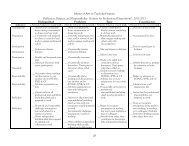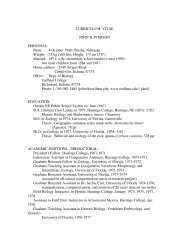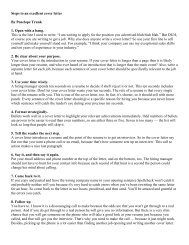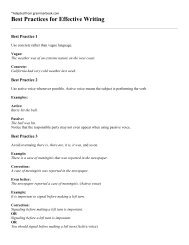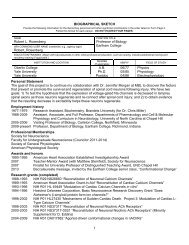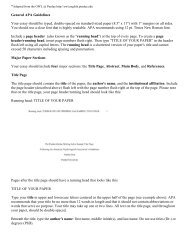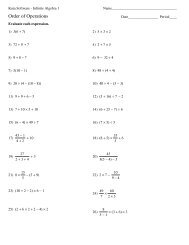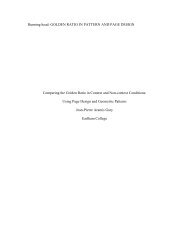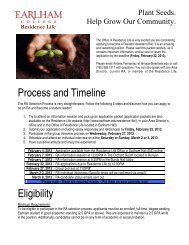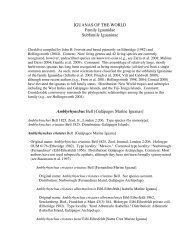Pre-writing Activities
Pre-writing Activities
Pre-writing Activities
You also want an ePaper? Increase the reach of your titles
YUMPU automatically turns print PDFs into web optimized ePapers that Google loves.
*Adapted from the University of KansasClusteringClustering is also called mind mapping or idea mapping. It is a strategy that allows you to explore therelationships between ideas.• Put the subject in the center of a page. Circle or underline it.• As you think of other ideas, link the new ideas to the central circle with lines.• As you think of ideas that relate to the new ideas, add to those in the same way.The result will look like a web on your page. Locate clusters of interest to you, and use the terms you attachedto the key ideas as departure points for your paper.Clustering is especially useful in determining the relationship between ideas. You will be able to distinguishhow the ideas fit together, especially where there is an abundance of ideas. Clustering your ideas lets you seethem visually in a different way, so that you can more readily understand possible directions your paper maytake.
*Adapted from the University of KansasOutlining your PaperAn outline is a plan for the paper that will help you organize and structure your ideas in a way that effectivelycommunicates them to your reader and supports your thesis statement. You’ll want to work on an outline afteryou’ve completed some of the other exercises, since having an idea what you’ll say in the paper will make itmuch easier to write. An outline can be very informal; you might simply jot down your thesis statement, whatthe introduction will discuss, what you’ll say in the body of the paper, and what you want to include in theconclusion.Remember that all <strong>writing</strong>—even academic <strong>writing</strong>—needs to tell a “story”: the introduction often describeswhat has already happened (the background or history of your topic), the body paragraphs might explain what iscurrently happening and what needs to happen (this often involves discussing a problem, the need for a solution,and possible solutions), and the conclusion usually looks to the future by focusing on what is likely to happen(what might happen next, and whether a solution is likely). If you work on telling a story in the paper, it willhelp you to structure it in a way that the reader can easily follow and understand.Develop an outline using the guide below. This will help you to demonstrate the relationships between the ideas,facts, and information within the paper. Here’s an example of what this might look like:• Introductiono Fact that grabs audience attentiono Background/history of issue/problem/topic/o Thesis statement)• Current state of issue/problem/topico Topic/claim sentence: make a claim that explains the paragraph is abouto Evidence that supports/explains the claim (this is often research from secondary sources)o Analysis that explains how the evidence support your claim and why this matters to the paper’sthesis statement• The need for a solution or course of actiono Topic/claimo Evidenceo Analysis• Possible Solutiono Topic/claimo Evidenceo Analysis• Conclusiono What might happen now?o Is a solution likely?o What’s the future of the issue?Your outline will contain more detailed information, and if there are certain areas that the assignment requiresyou to cover, then you can modify the outline to include these. You can also expand it if you’re <strong>writing</strong> a longerresearch paper: the discussion of the problem might need several paragraphs, for example, and you mightdiscuss the pros and cons of several possible solutions.



